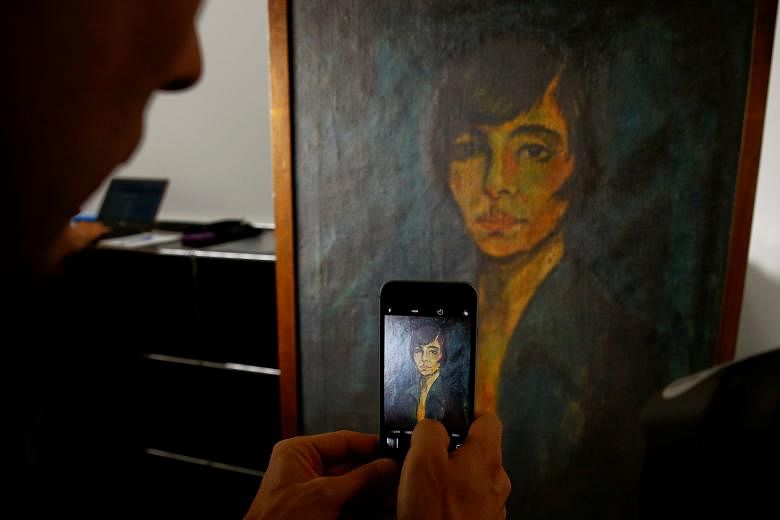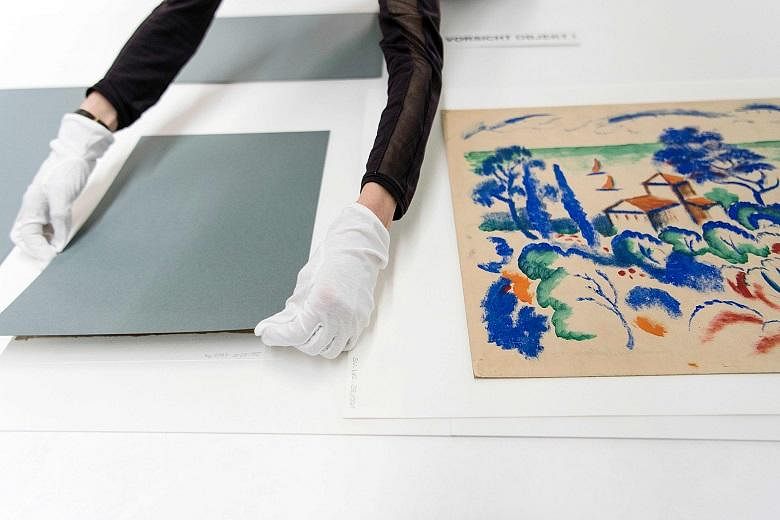BERN (REUTERS) - A director of a Swiss museum preparing for a Nazi-era art collection's long-awaited public unveiling later this year said her goal remains finding heirs to any works that may have been looted from Jewish owners.
Bern Museum of Fine Arts head Nina Zimmer, who took ownership of 150 drawings, lithographs and paintings last week ahead of an exhibition slated to begin in November, said research shows none of these was stolen.
But questions linger over the provenance of some of the collection's pieces still in Germany, where a 2012 raid by the authorities on a Munich apartment produced a sensation: 1,500 long-lost works by modern masters, including Pablo Picasso, Otto Dix and Henri Matisse.
"Every restitution is a victory for us," Ms Zimmer said while acknowledging such provenance sleuthing remains unpredictable.
"I cannot make any promises."
In addition to her exhibition in Bern, the Bundeskunsthalle in Bonn, Germany, is planning to display items from the collection, which to date has produced only five works confirmed to have been stolen by the Nazis.
Four have been returned to heirs so far, including a Matisse portrait, Sitting Woman, that belonged to Paris-based collector Paul Rosenberg.
Before its discovery five years ago, the massive trove was hidden for years in the German and Austrian homes of Cornelius Gurlitt. His art-dealer father, Hildebrand, amassed it after being enlisted by the Nazis to sell so-called "degenerate" modern art they had seized from German museums.
"It is the most important cache of art from the Nazi era to be found in private hands since the immediate post-war period," said Mr Jonathan Petropoulos, a Claremont McKenna College history professor in California.
When Gurlitt died aged 81 in 2014, he named the Bern museum as benefactor.
It accepted, on the condition that works whose lineage was unclear must remain in Germany.
The Bern museum is working with the German Lost Art Foundation, which tracks Nazi-era art thefts, to unravel the collection's murky past, though not everyone is pleased with the progress.
Mr Christopher Marinello, a lawyer who helped Mr Rosenberg's heirs recover their lost Matisse in 2015, said the pace of research has been glacial - even after he provided German researchers with "full and complete provenance on a sliver platter", he said.
"Internal and governmental bureaucracy in Germany is quite out of control," he noted. "There is an inherent lack of sympathy for the victims of Nazi looting."
The German Lost Art Foundation, which took over from a previous task force last year, contends it is making "positive strides", including digitising documents and making them available via the country's Federal Archives.
The foundation is now scrutinising 1,039 works from Gurlitt's collection, it added, of which 152 have produced some provenance evidence or claims from possible heirs that indicate they could be Nazi loot.
Its work continues until December. "One of the biggest challenges is reaching reliable conclusions and addressing research gaps, especially in such a short period of time", the foundation said.


